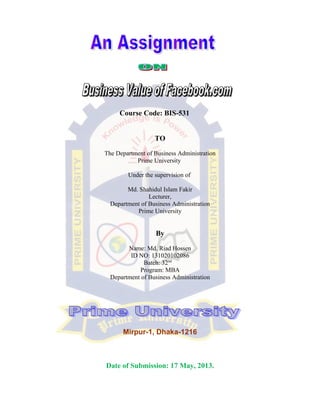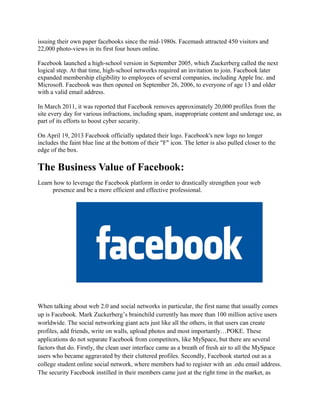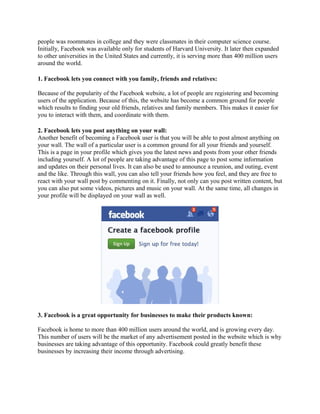This document provides information about Facebook, including:
1. Facebook is an online social networking service founded in 2004 by Mark Zuckerberg that allows users to create profiles, share photos and messages, and connect with friends.
2. The document discusses Facebook's history and growth, privacy settings, applications platform, and advertising features.
3. It also covers benefits of using Facebook for businesses and individuals, as well as some problems Facebook has faced such as bans in some countries and overcrowding at public events.









